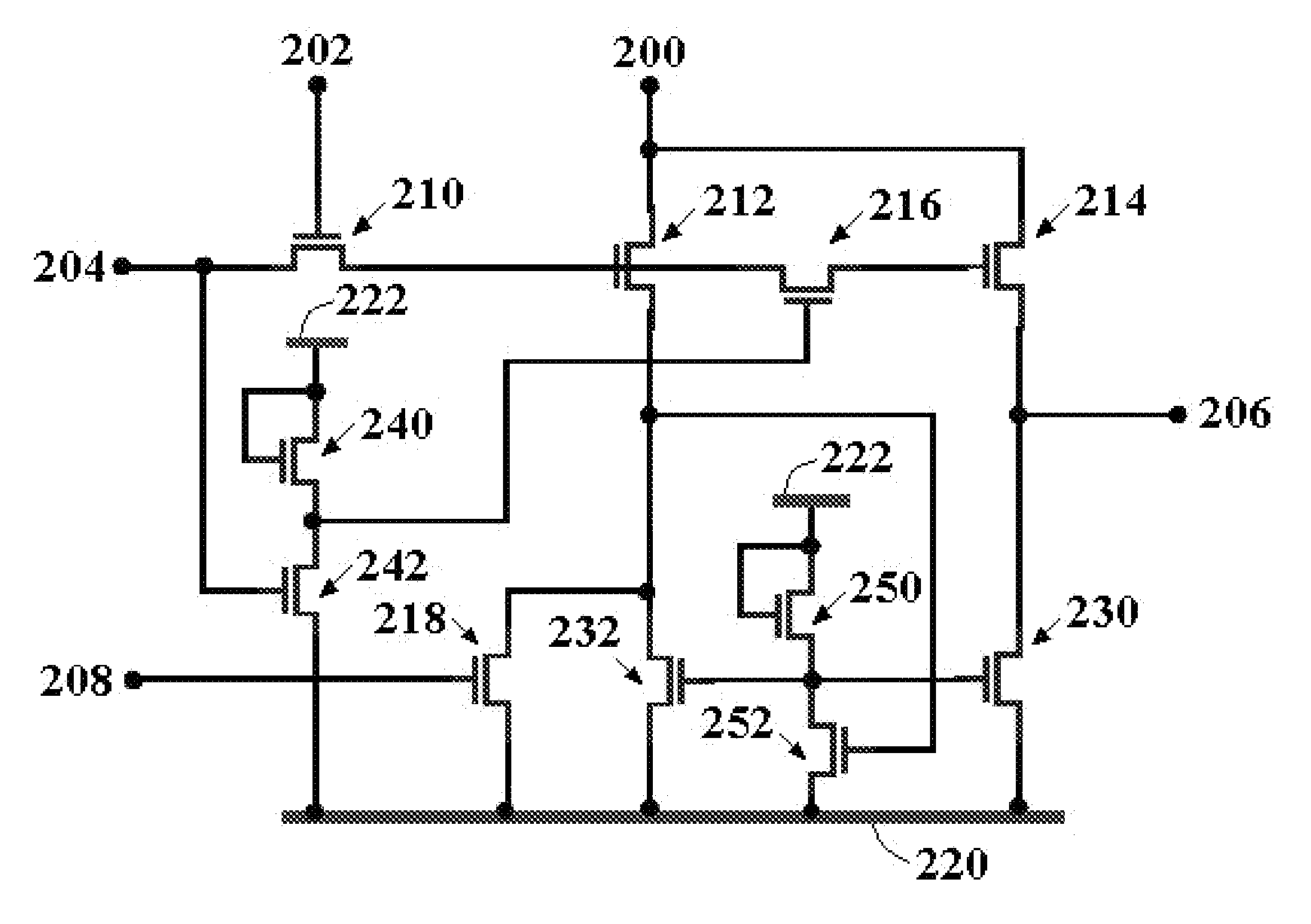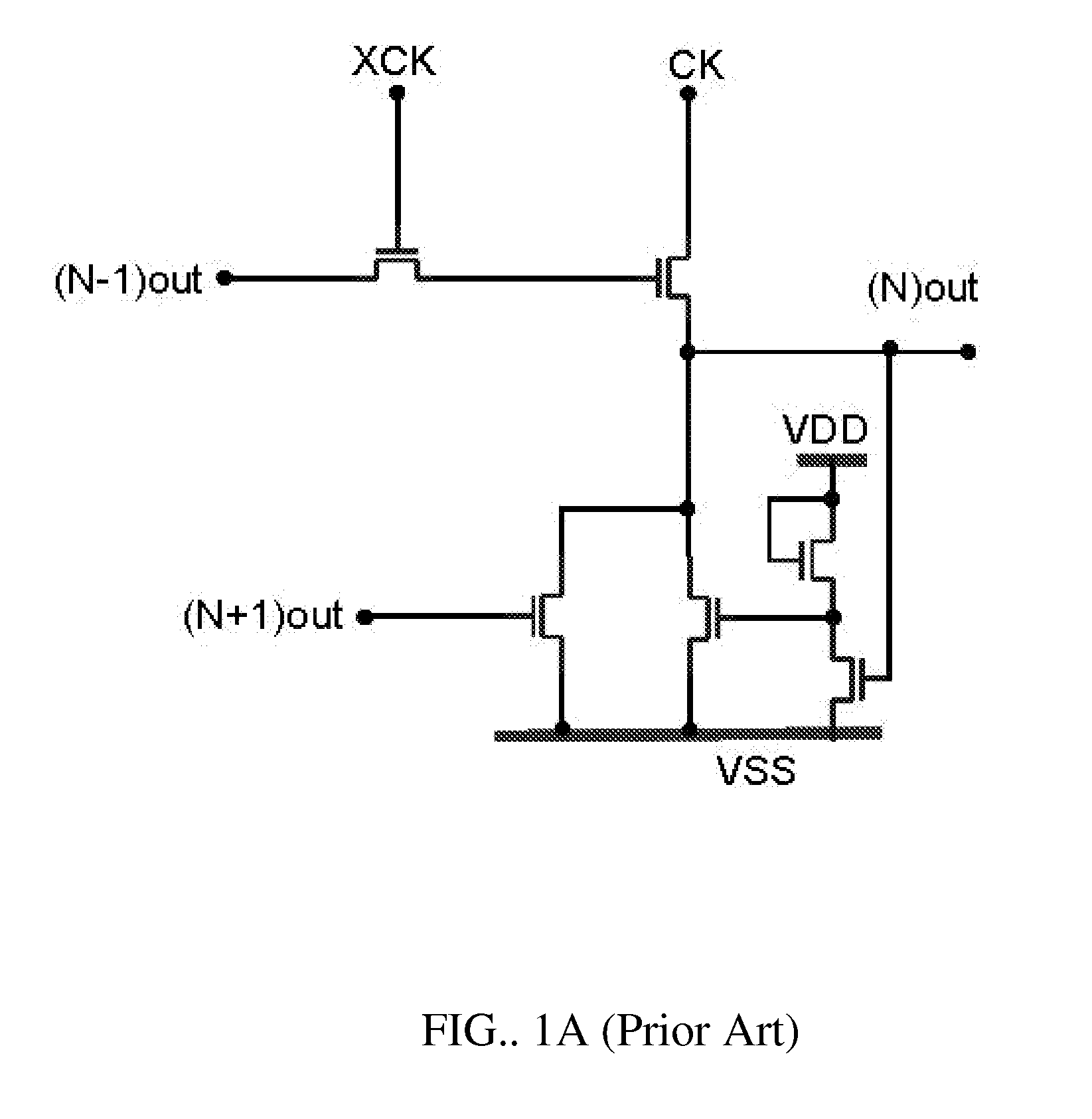Dynamic Shift Register Circuit
a register circuit and shift register technology, applied in the direction of information storage, static storage, digital storage, etc., can solve the problems of serious distortion of display images, high possibility of wrong image data being received by the pixel array, and affect the display quality, so as to avoid data input errors and reduce the voltage of the cross point
- Summary
- Abstract
- Description
- Claims
- Application Information
AI Technical Summary
Benefits of technology
Problems solved by technology
Method used
Image
Examples
Embodiment Construction
[0023]FIG. 2A shows a circuit diagram of a dynamic shift register circuit of a preferred embodiment of the present invention. The dynamic shift register circuit comprises a plurality of shift register units connected in series. The shift register units are controlled by a clock signal 200 and an inverse clock signal 202. Each of the shift register units comprises an input transistor assembly 210, a first output transistor 212, a second output transistor 214, a switch transistor 216, a switch, a fourth transistor 230, a fifth transistor 232, a sixth transistor 240, a seventh transistor 242, a eighth transistor 250, and a ninth transistor 252. The input transistor assembly 210 as shown in FIG. 2A of this embodiment is an input transistor and comprises a first electrode, a second electrode, and a gate electrode. The first output transistor 212 comprises a first electrode, a second electrode, and a gate electrode. The second output transistor 214 comprises a first electrode, a second el...
PUM
 Login to View More
Login to View More Abstract
Description
Claims
Application Information
 Login to View More
Login to View More - R&D
- Intellectual Property
- Life Sciences
- Materials
- Tech Scout
- Unparalleled Data Quality
- Higher Quality Content
- 60% Fewer Hallucinations
Browse by: Latest US Patents, China's latest patents, Technical Efficacy Thesaurus, Application Domain, Technology Topic, Popular Technical Reports.
© 2025 PatSnap. All rights reserved.Legal|Privacy policy|Modern Slavery Act Transparency Statement|Sitemap|About US| Contact US: help@patsnap.com



